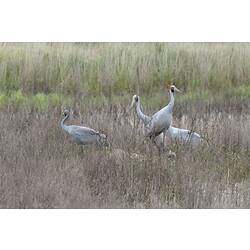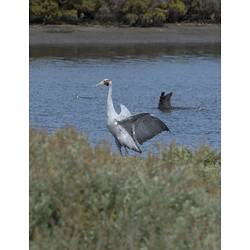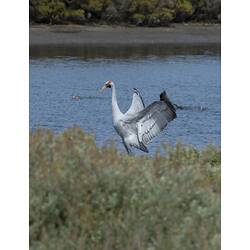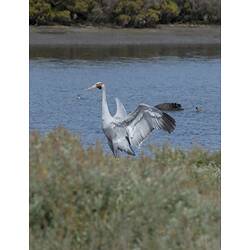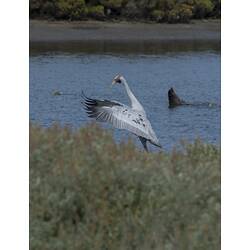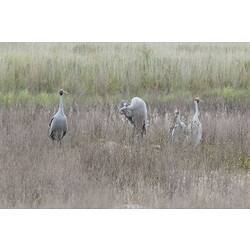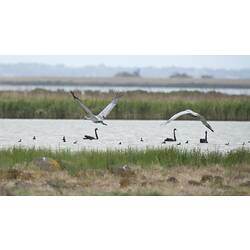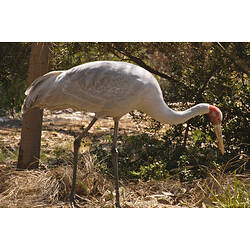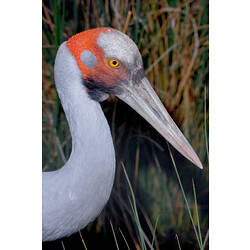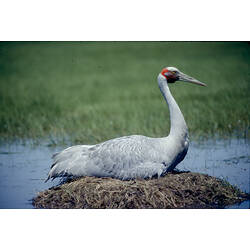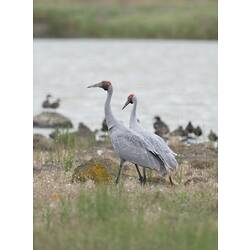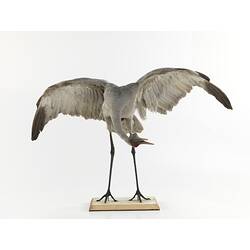General Description
Body grey with red-orange patch on face and behind head. Eyes yellow, legs dark grey-black. Bill grey. Up to 1.4 m tall.
Biology
Brolgas are known for their intricate mating dances where pairs display for each other, individually or together. These dances include leaping, stepping and bowing. Usually a male and female Brolga will pair for life. Nests are built out of sticks and grasses on islands, usually in marshlands. The breeding season starts after the rainy season so varies in timing across the species' range. In the south of Australia breeding is usually between September and December. One brood is produced each year consisting usually of two eggs. Both parents incubate the eggs and feed the young for up to eleven months after they hatch. Outside of the breeding season Brolgas form large family groups, sometimes including hundreds of individuals. Brolgas largely eat plant material, digging for roots in particular, but will also eat insects and small vertebrates such as frogs. Populations of Brolgas appear to be declining, especially in the south of Australia, largely due to destruction of habitat such as the draining of wetlands.
Distribution
Northern and eastern mainland Australia.
Habitat
Freshwater wetlands and swamps.
More Information
-
Animal Type
-
Animal SubType
-
Brief Id
A tall grey crane with a red-orange patch around the head.
-
Colours
Pink, Grey, Orange
-
Maximum Size
1.4 m
-
Habitats
-
Diet
Omnivore
-
Diet Categories
Plants, Insects, Frogs
-
Endemicity
-
Conservation Statuses
CITES: Trade restrictions (Appendix II), FFG Threatened List: Endangered, EPBC Act 1999: Not listed, IUCN Red List: Least Concern
-
Taxon Name
-
Common Name
Brolga
-
Kingdom
-
Phylum
-
Subphylum
-
Class
-
Order
-
Family
-
Genus
-
Species Name
rubicunda


